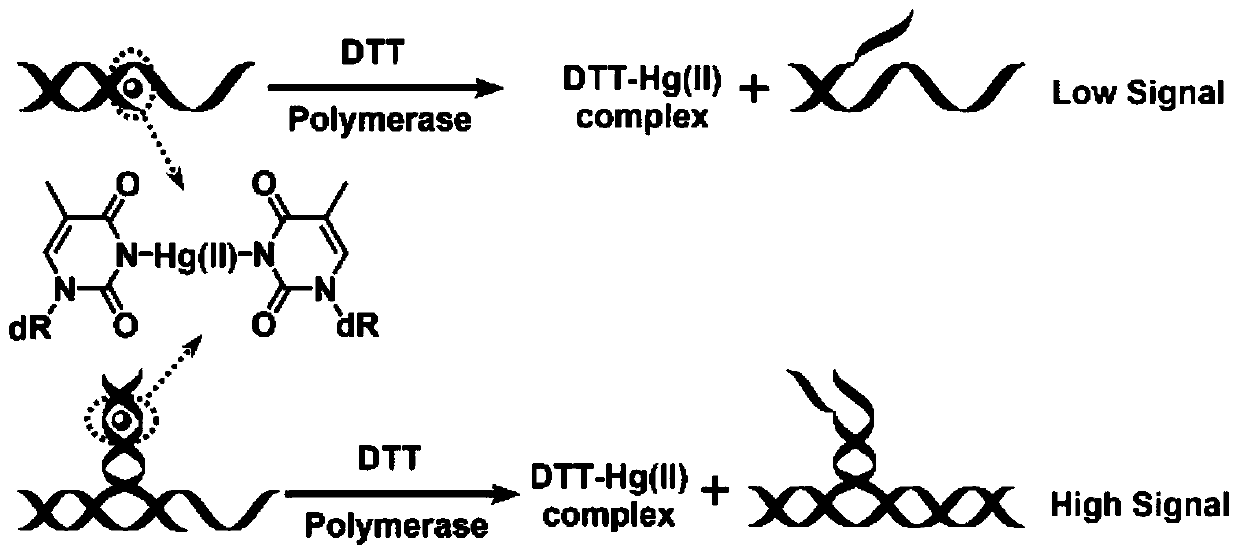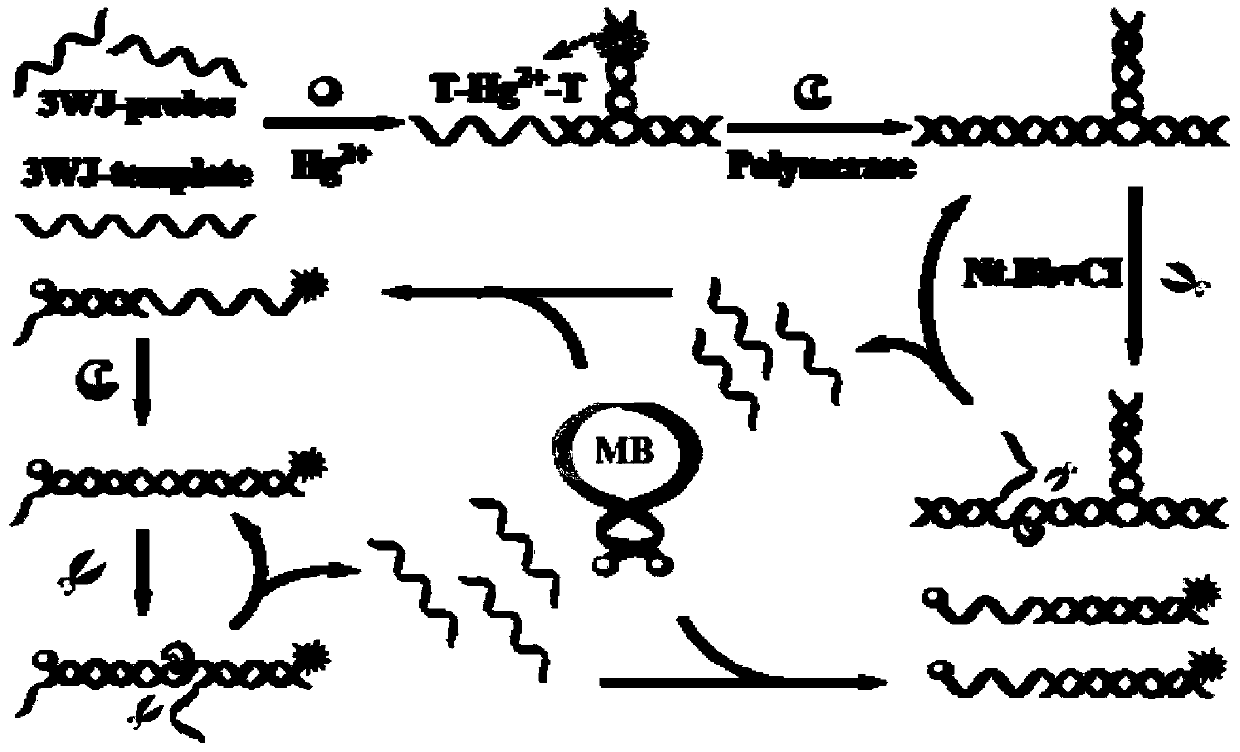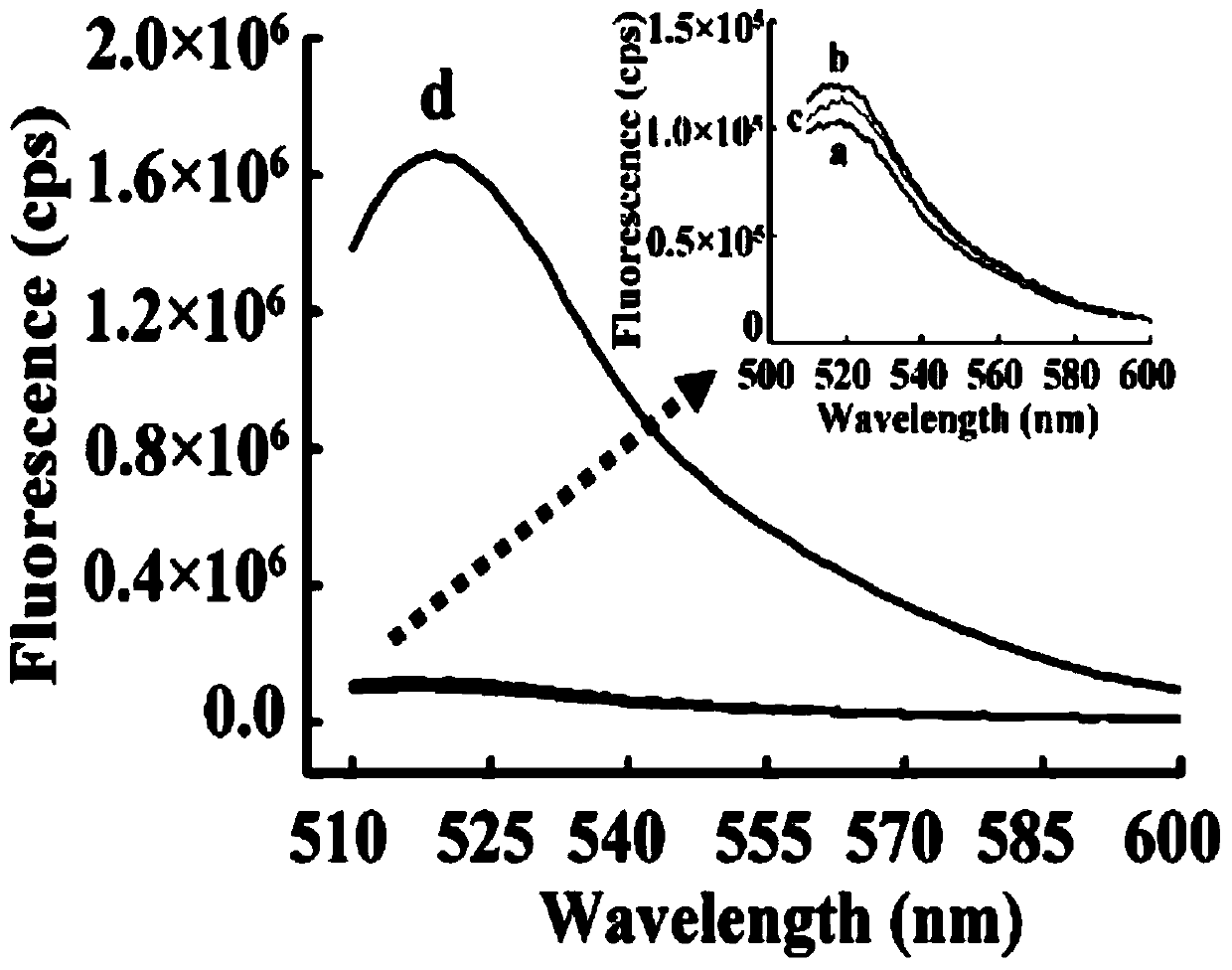DNA Structure Probe Based on Nucleic Acid Isothermal Amplification Technology to Detect Mercury Ions
A constant temperature amplification and technical detection technology, applied in the field of DNA structure probes, can solve the problems of reduced effect of mercury ion and thymine interaction, low detection sensitivity of trace mercury ions, affecting the application of nucleic acid constant temperature amplification method, etc. Nucleic acid amplification efficiency, easy operation, and the effect of avoiding interference
- Summary
- Abstract
- Description
- Claims
- Application Information
AI Technical Summary
Problems solved by technology
Method used
Image
Examples
Embodiment Construction
[0022] The present invention is described in detail below in conjunction with accompanying drawing.
[0023] The DNA structure probe for detecting mercury ions based on nucleic acid constant temperature amplification technology includes the nucleic acid sequences of three DNA structure probes that contain mismatch sites and can form a triple hybridization structure through nucleic acid hybridization. The nucleotide sequence (5' to 3 '):
[0024] 3-WJ probe 1AGAGGTAGTAGGTGATAGTCGG
[0025] 3-WJ probe 2CCGTCTTTTCTCCCCATAT
[0026] 3-WJ template: TGAGGCTAGAGCGAGCTGAGGCGGATATGGAATACTACCTCTAAA.
[0027] Working principle of the present invention is:
[0028] The DNA structure probe of the present invention utilizes nucleic acid constant temperature amplification technology to detect mercury ions, and the steps are as follows:
[0029] (1) Mix the nucleic acid sequences of three DNA structure probes containing mismatch sites and capable of forming a triple hybridization structur...
PUM
 Login to View More
Login to View More Abstract
Description
Claims
Application Information
 Login to View More
Login to View More - R&D
- Intellectual Property
- Life Sciences
- Materials
- Tech Scout
- Unparalleled Data Quality
- Higher Quality Content
- 60% Fewer Hallucinations
Browse by: Latest US Patents, China's latest patents, Technical Efficacy Thesaurus, Application Domain, Technology Topic, Popular Technical Reports.
© 2025 PatSnap. All rights reserved.Legal|Privacy policy|Modern Slavery Act Transparency Statement|Sitemap|About US| Contact US: help@patsnap.com



